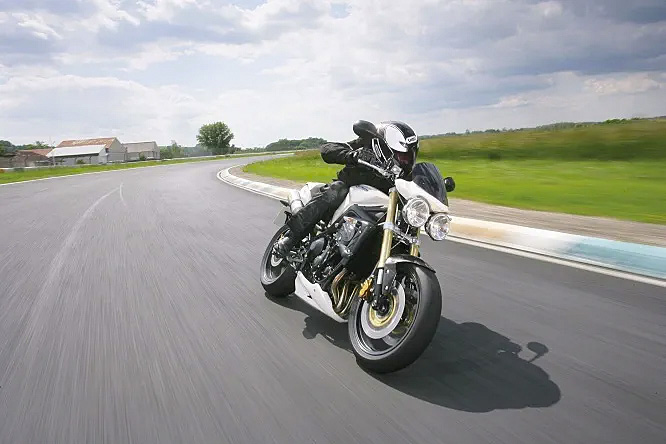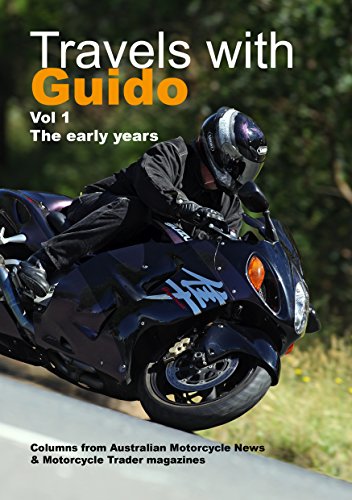Motorcycle Investor mag
Subscribe to our free email news

Profile: First-gen Triumph Street Triple 675
(by Guy ‘Guido’ Allen, Apr 2021)
Naked Nutter

They weren’t the hero bikes of their day, but Triumph’s Street Triples were big fun
Every now and then, you might hear the phrase ‘less is more’. For the cynical, it sounds like an excuse to fob off a cheap version of the real deal. Conversely, sometimes it’s actually right and Triumph’s first Street Triple, of 2007, is a good example.
When this model was launched, the firm was unquestionably established as a force in the market. So what?
You have to remember that, just 20 years before, the company was little more than a glint in the eye of John Bloor – the English real estate developer and investor who risked huge resources to revive the brand. Prior to that, as far as the market was concerned, it didn’t exist.
With a start-up fund estimated at 80 million quid, Bloor turned an historic and deceased brand into a going concern. The first bikes rolled out in 1991. Tough but conservative designs, in tiny numbers.
Contrast that situation with this description by the USA’s Cycle World magazine, in 2007: “There is no doubt that Triumph Motorcycles is on a roll. Exciting new products have been jumping out of its factory like never before. The Daytona 675 took the middleweight sportbike market by storm a year and a half ago…this little brother to the Speed Triple steals that bike’s styling and then grabs the powerplant and chassis…and rolls it all into a new middleweight hooligan monster.”
Let’s roll back a bit. This, the Street Triple, wasn’t Triumph’s first middleweight. That honour belongs to the TT600 inline four of 2002, a nice enough thing but comprehensively overwhelmed by the viciously competitive 600 market then dominated by the big four Japanese makers. And don’t feel bad about that – they’d invested squillions into producing some very tasty machinery.
The TT600 ended up fading out of the market, though it was a worthy enough ride. One day, it might get noticed as part of the marque’s history and will be worth more than it is now.
Triumph rightly decided it should have another crack at this whole midrange gig. It had years before dropped the big-capacity fours (the 1200s), and so fours of any kind were off the agenda.
It then made the inspired decision to have a go at a bigger mid-range triple. A 675. That takes you out of the 600 class and ever-changing international competition rules made the oddball capacity attractive. You can argue for a dispensation for more capacity if you have less cylinders than the competition. After all, Ducati was for years able to run one-litre twins against Japanese 750 fours in world superbikes. The precedent was there.
In 2006 we got the Daytona 675. Not a 750, not a 600. Why? If you rode one somewhere near its launch date, you’ll know this was an exceptional bit of kit. I’d rate it alongside BMW’s first (and much later) S1000RR as a market-busting package, though for different reasons.
In the right place, it would give a litre bike a serious fright. That well-tuned triple was a flexible monster and a revelation at the time. You also got a super-narrow, light, sports bike that handled very nicely. A bit tall in the saddle, but otherwise a real weapon.
In the saddle it gave nothing you could measure away to a 750 four and was just big enough to put a similarly-tuned sports 600-four at a serious disadvantage.
All of which was great, but may have set the bar of performance expectation a little high when the naked Street Triple was announced. Are we now talking a race-tuned naked? No.
Triumph already had a nice tradition for producing feisty naked bikes, none better than the Speed Triple from the T300 series of 1993-on. That was the undressed version of the bullet-proof Daytona 900 and was widely regarded as the sexiest of the initial Hinckley factory line-up. Think bulldog with a headlight.
It was (for the nineties) a latter day café racer that had a bit of Bauhaus about it and happened to be a big if not subtle ride. Running the 98hp version of the 900 triple powerplant, it’s one to look for in the used market.
That first edition of the Speed Triple was never really matched by later iterations when it came to style, but it left a legacy for the naked version of the 675: it’s okay to have the stripped-back version of your premium models.
When it came to the 675, Triumph detuned the engine – less peak power at 80kW (107hp) versus 92kW (123hp), though max torque was developed over 2000rpm lower.
You also got less sophisticated suspension (the rear adjustment was ride height only) and cheaper brakes – two-piston calipers up front instead of four. It was built to a price, which was several thousand dollars lower than the Daytona at $12k.

And the looks? It was a mini Speed Triple (a 1050) of the time. Which means dual round chromed headlamps stuck out the front of a machine that had a Mecchano look to it. Then there were the nicely-formed headers leading to high-mounted dual mufflers at the back.
There were some additional styling touches, such as the sculpted radiator surrounds that faired back into the frame, and that lovely high-arch triangulated rear swingarm.
There was a recall involving this and several other Triumph models, for regulator/rectifier units. By now, any issue should be fixed, but treat any electrical issue with suspicion. In-service reports from owners point to individual hassles but no strong pattern. All up, they come across as reliable.
Okay, so let’s talk about the experience in the saddle. The numbers say 80 per cent of the torque comes on song from a low 3500rpm. And this says pretty much everything you need to know about the performance. No, it’s not going to set a new lap time around Phillip Island, but it is a hell of a thing on the street.
In a round-about way we’re heading back to my initial mention of less is more. The Street Triple MkI is running less horsepower, less sophisticated suspension and brakes than its glam Daytona sibling, but the combination of relatively lazy engine tuning and more upright naked bike seating makes it a much easier bike to enjoy.
Over the years I’ve often said to would-be Daytona 675 buyers that you’d get a whole lot more value out of the naked, and will stand by that. At anything resembling road velocities, it’s more accessible and fun.
That said, keep an eye out for a good early Street Triple R, with the full-house Daytona brakes and suspension, with the only penalty being a slightly higher seat. Premium models like this will always be more sought after.
These are not very expensive motorcycles. There is a wealth of them available in the Au$6000-9000 range, including R models. They’re a performance bargain.
If you’re looking at collectability, get the earliest and lowest-mileage R version you can afford. They represent part of the renaissance in Triumph’s fortunes and are a great ride.

Good
Light and upright
Nice power spread
Easy to ride
Not so good
Cheaper suspension on basic model
Less power than glam bikes
SPECS:
Triumph Street Triple 2007
ENGINE:
TYPE: Liquid-cooled, four-valves-per-cylinder, inline triple
CAPACITY: 675cc
BORE & STROKE: 74 x 52.3mm
COMPRESSION RATIO: 12.7:1
FUEL SYSTEM: Fuel injection
TRANSMISSION:
TYPE: Six-speed, constant-mesh,
FINAL DRIVE: Chain
CHASSIS & RUNNING GEAR:
FRAME TYPE: Alloy trellis
FRONT SUSPENSION: 41mm Kayaba USD telescopic fork
REAR SUSPENSION: Kayaba monoshock
FRONT BRAKE: 308mm discs with Nissin twin-piston calipers
REAR BRAKE: 220mm disc with one-piston caliper
DIMENSIONS & CAPACITIES:
DRY WEIGHT: 167kg
SEAT HEIGHT: 800mm
WHEELBASE: 1410mm
FUEL CAPACITY: 17.4lt
WHEELS & TYRES:
FRONT: 17 x 3.5-inch three-spoke cast alloy with 120/70 ZR17 tyre
REAR: 15 x 5.5-inch three-spoke cast alloy with 180/55 R15 tyre
PERFORMANCE:
POWER: 79kW @11,850rpm
TORQUE: 68Nm @ 9750rpm
-------------------------------------------------
Produced by AllMoto abn 61 400 694 722
Privacy: we do not collect cookies or any other data.

Archives
Contact





